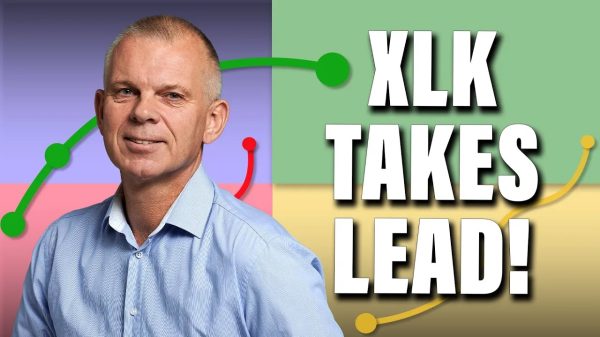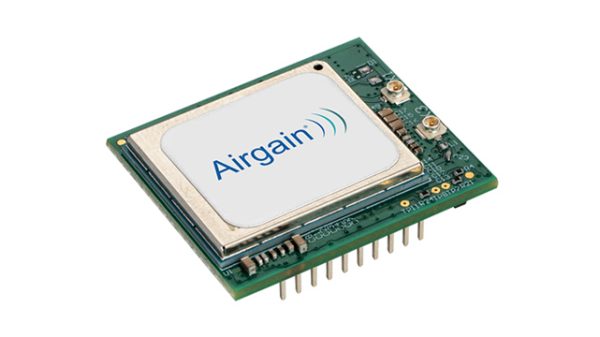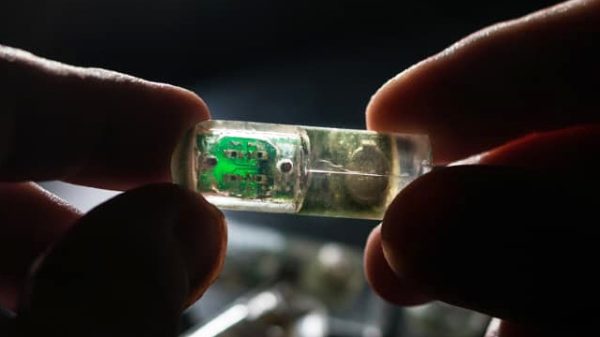This article is based on insights of the 82-page Digital Operation Signals – Industrial IoT Solution Spotlight (July 2023) report, published by Microsoft with research conducted by IoT Analytics. The report takes a deeper look at 300 recent IIoT initiatives, their challenges, their successes and particularly how they are implemented. IoT Analytics surveyed key stakeholders working on their respective employers’ IIoT initiatives between October and December 2022 and conducted in-depth interviews with a subset of them.
State of Industrial IoT in 2023
Industrial IoT (IIoT) in 2023 is on the way to becoming mainstream:
Two-thirds of industrial organizations reported they are executing an IoT strategy. IoT projects have a 14% higher success rate than five years ago. The median time for IIoT projects to break even has decreased from 24 to 20 months over the same period. Common challenges such as budget availability, project complexity, and data management have diminished by approximately 50%.While IIoT is becoming more mainstream, a core question persists: should companies try to buy a readily available IIoT solution, should they custom-build an IIoT solution, or is there a middle option?
The research shows that there is no universally best approach to IIoT implementation. However, there is often a right approach for individual projects.
Build, buy, or buy and integrate?
Finding the right approach for individual IIoT projects depends on several organizational factors, including:
Available budget Desire to differentiate from competition Break-even / ROI goals Use cases at handThe research found a growing trend toward the buy approach: 30% of projects that began in 2021 or 2022 used the buy approach compared to only 9% of projects completed in or before 2020. This growth has come at the expense of a reduced preference for the buy-and-integrate approach, which dropped from 50% to 28%.
“We clearly see a trend that people prefer proven standardized solutions”
IoT solutions providers have recognized this trend as well. David Shook, Chief Data Officer of US-based Uptake, which helps customers realize IoT solutions, explains, “We clearly see a trend that people prefer proven standardized solutions rather than building something from scratch.”
However, many organizations are still opting for the build and buy-and-integrate approaches. The report offers insight into the decision-making process for each approach.
1. The build approach to IIoT solutions
47% of respondents stated their IIoT initiatives used the build approach, with 40% stating that their custom-built solutions exceeded their expectations. Different industries have different solution footprints. For example, 89% of respondents from the buildings industry reported using the build approach, while 33% from the machinery industry reported the same.
“If you build it, you own it.”
Key reasons to build
In the words of a US cloud integration advisory firm VP, “If you build it, you own it.” This sentiment captures the core benefit of the build approach: organizations that build their IIoT solutions own the intellectual property rights, and they can incorporate any features they desire. The approach provides the freedom to customize the entire IIoT solution, from how it integrates with new and current equipment to the user interface/user experience. In addition to this, organizations don’t have to lock in with a vendor.
Key reasons not to build
The decision to build an IoT solution comes with costs in terms of money, effort, and time. First, organizations either need a robust IT department or a reliable partner to not only build and integrate the solution for them but also to maintain and update the solution.
Next, developing a solution can come with high or unexpected costs, with large funding often taking time to get approved. 20% of respondents experienced budget constraints, the largest challenge faced with this approach, and the strategy director for a Spanish electronics company explained, “Huge funds were required for this initiative, and it took a long time for us to collect such a large sum of money.”
Finally, building an IIoT solution typically leads to the longest project timeline out of the three approaches, from start to large-scale roll-out. The report shows that the stakeholders reported a median of 9 months just to develop the business case—versus 6 months for the buy approach. The other phases of development and launch, including median time to amortize investments, were also longer than the buy approach.
2. The buy approach to IIoT solutions
With IIoT becoming more commonplace and IoT developers from various industries sharing lessons learned, more off-the-shelf solutions are coming to market, though availability is still limited. As organizations standardize their operations with standard industrial hardware or IT architecture, tried-and-tested IIoT solutions can integrate with these tools for better operability and analysis. For new companies, starting with a ready-made solution allows them to build IT/OT architecture around their IIoT solution rather than trying to integrate after the fact—a ground-up approach.
“It is rarely necessary to go for a custom-made solution in the first stages”
Key reasons to buy
Newer or smaller organizations with limited budgets and resources can benefit from ready-made solutions. A director of logistics for a European machinery equipment company noted that “it is rarely necessary to go for a custom-made solution in the first stages of [a business] journey” since companies need to learn and understand their customers’ needs, adding that “starting with standard products accelerates projects and reduces overall cost.”
Reduced implementation time is another benefit of the buy approach. The research found that with this approach, the median time required to complete the first two phases of an IIoT project was 9 months, compared to 16 months for the build approach. Since the buy approach offers ready-made, reliable solutions, organizations and vendors only need to customize the solution to the organization’s needs and equipment.
The research also found that 43% of respondents that used the buy approach experienced reduced break-even points, with a median time of 12 months from the first project-related expense to reaching the commercial break-even point compared to 20 months for other approaches.
Finally, the buy approach allows an organization to remain slim. The external developers of ready-made solutions will often offer continued support and updates for the solutions, meaning the organization does not need to maintain an internal team just for this purpose.
Key reasons not to buy
While the buy approach limits necessary resources and shortens implementation time, only 13% of respondents stated that the approach exceeded their expectations. The report shows that 30% of projects using ready-made solutions were missing end-user capabilities, and 20% faced challenges with addressing cyber threats.
13% of projects experienced both internal cooperation and resistance to change issues as well. Because commercial IIoT solutions come with their own processes, workflows, and (sometimes) equipment, organizations may find it difficult to integrate the solution into their own processes and architectures. A senior engineer of a German chemicals company stated, “To support the maintenance team for IoT devices, the change management team had to do several hands-on trainings.”
3. The buy-and-integrate approach to IIoT solutions
38% of IIoT initiatives in the dataset use the buy-and-integrate approach. Buying and integrating an IIoT solution allows organizations to combine proven technology and product support with the freedom to customize the solution to their IT/OT and user experience needs. It also helps address some of the limitations of the build and buy solutions, such as implementation time and end-user capabilities.
The report shows that the electronics and machinery industries saw the most build-and-integrate solutions (57% and 52% of projects, respectively).
“Buying and integrating allows to combine proven technology with the freedom to customize”
Key reasons to buy and integrate
Opting for the buy-and-integrate approach can often come out of necessity, including some of the following factors:
Lack of off-the-shelf solutions that meet an organization’s IT/OT architecture Limitations on capability in fully developing and/or maintaining a solution Budgetary constraints Cyber security needs not met by available solutionsThe decision to use this approach can also include preferential reasons, including:
The freedom to customize a majority of the solution Creating a defendable competitive advantage that a widely available off-the-shelf solution cannot provide Limiting reliance on vendors, balancing necessary support and updates with the ability to adapt to changes in-house.One respondent, the chief experience officer of a US pharmaceuticals company, stated a combination of necessity and preferential factors: “We did not have adequate in-house knowledge in IT or operations to consider building from scratch. We did not want to be entirely dependent on third parties for maintenance. A tailored solution was essential to ensure operator confidence, so a hybrid model was best.”
Complex integration projects can also benefit from the buy-and-integrate approach, where a custom-built solution would be too costly and ready-made solutions are not designed to handle the complexity. An engineering manager for an FMCG manufacturer said, “Because the size of our plant is too large, it became really difficult for us to sync our machines with the various sensors and software tools in use.” Opting for the buy-and-integrate approach allowed the company to integrate the various commercial software tools and their various OT equipment.
Key reasons not to buy and integrate
While the buy-and-integrate approach finds a positive middle ground between the other two approaches, it also absorbs some of the disadvantages of those approaches. First, ready-made solutions are often built with specific applications in mind, so engineers and developers need to understand the solutions and work with vendors to develop additional integration services. This requires additional management of internal and external stakeholders.
Additionally, though the buy-and-integrate approach may be ideal for complex projects, the complexity of implementation and integration was the top challenge faced by adopters of this approach (19% of projects). Second to this was organizations lacking IT capabilities to customize and integrate the solutions (15% of projects), requiring further dependency on vendors to develop and maintain solutions.
Finally, the development of additional integration services becomes an additional project for the organization, meaning uncertain costs can come into play.
These reasons are some of the factors leading to this approach having the longest break-even time of the three options.
Which approach to choose
While there is no universal best solution, the report shows that organizations should carefully weigh which approach best fits their budget, their desire to differentiate themselves from competitors, their break-even goals, and the use cases.
The post IoT solution development: Build, buy, or a bit of both? appeared first on IoT Business News.
























